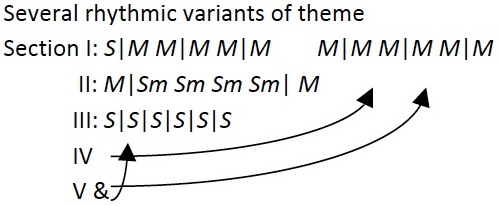Miguel de Fuenllana
Fantasía 34, sobre un passo forzado ut re mi fa sol la
Orphenica Lyra (1554), fol. 105
fu096
| Source title | Esta fa[nt]asia va sobre vn passo forçado vt re mi fa sol la. Ha se d[e] baxar la. v.i vn pu[nto]. |
|---|---|
| Title in contents | Fantasia vndecima sobre vn passo forçado: vt re mi fa sol la. |
| Text incipit |

Music
Category abstract
Genre fantasia
Fantasia type ImM
Mode 6
Voices 4
Length (compases) 122
Vihuela
Tuning G
Courses 6
Final VI/0
Highest I/7
Lowest VI/0
Difficulty difficult
Tempo not specified
Song Text
Language
Vocal notation
Commentary
Unique example in Fuenllana of a fantasia on a ‘passo forçado’ work, a solmised cantus firmus: c d e f g a. However Fuenllanas’s piece is not exclusively a monothematic work. It is set, particularly at the beginning, in the style of polythematic imitative pieces. The 122 compas work can be divided into 5 episodes. It is the second of the group of fourpieces, fu095–fu098, that use this scordatura, with the sixth course lowered one whole tone.
• I (1-34) begins with S/A >> T/B pairs with theme 2 in S+T & 1 below >> imitations of 1.
• II (34-49) B/T – A/S pairs with 1 condensed rhythmically in upper voice & theme 3 in the lower voice of the pair >> 1 >> free to K.
• III (49-73) 2 statements of 1 in B in S values, harmonized in 10ths above, with conjunct off-beat parallels giving 5-6 harmony above B. Each statement has long tail in free counterpoint.
• IV (73-97) Ostinato statements of 1 in mostly homophonic 3 & 4 part texture.
• V (97-122) begins with S/A – T/B pairs of 1 >> S theme 1 in B with arpeggiaic texture in 106-107 >> free >> coda with 1 in T.
Further references to the “paso forçado” can be found in Cayrasco, Templo militante (1602) (carrasco1602) ➞ “Documents”: “passos de música forçosos”, “Del modo de seguir passos forçados.”
